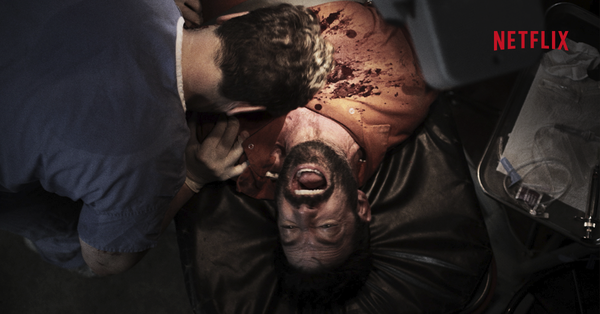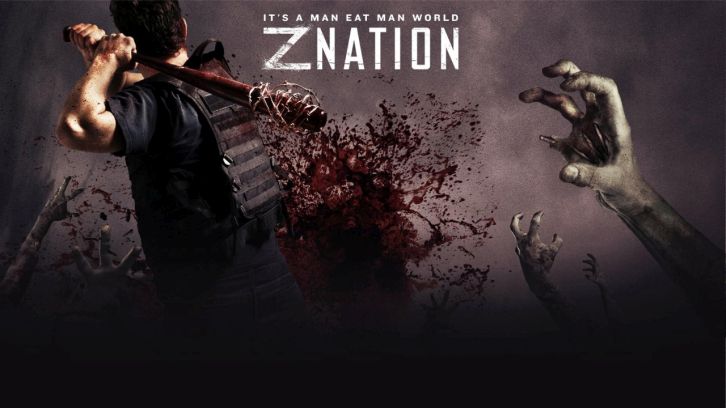Zombie Road Trip! | 8 Bloody Good Reasons to Binge-Watch “Z Nation”
Oct 4, 2016 • Karl R. De Mesa

Oct 4, 2016 • Karl R. De Mesa

By KARL R. De MESA
For every Romero zombie masterpiece there’s 10 or so trying-hard wannabes that just don’t make the cut. Fewer still are the genre’s comic obras like Shaun of the Dead, Zombieland, or the uniquely hilarious and succinctly Japanese Tokyo Zombie, that successfully lampoons the genre while retaining all the good values thereof, while also becoming uniquely transcendent enough to stand on its own. Never mind the Zombie Strippers, the Cockneys vs Zombies, and the abominable Warm Bodies.
I came to Syfy’s (and Netflix’s) Z Nation completely without expectation. I came away a fan.
Previous to this I’d quit The Walking Dead, a.k.a that other zombie apocalypse show, TV series for its already overwrought and completely, almost zero risk penchant to let fave characters survive, but handling said scene completely without the subtlety or pathos of the comic book original. I mean, c’mon, it’s a zombie soap so I get how the artistic feed to viewer brains sometimes needs to be done “here comes the airplane!” style; but, still. STFU, Kirkman!
So why, Z Nation? Three main things: it’s relentlessly low-fi funny (you can tell exactly where the budget went per episode), it’s got an almost rabid obsession with throwing at least two major plot twists into every episode (kind of like putting cliffhangers and ending chapter every 500 words for a short story), and the care it takes to balance absurdity and character development without sacrificing the uniquely tweaked world it’s built on—a world where the characters and the people they encounter know exactly what a zombie is and how to kill it (and see the humor in their post-apocalypse predicament).
By now, I’ve finished the first season, and I hear the second (and the recently released third!) seasons are just as entirely excellent and binge-worthy.
Here are 8 more entirely SPOILER-FREE reasons you should get on the zompocalypse train, get refreshed by the fun, and show your zombie-exhausted brain some mercy.
Plenty of critics have pointed out that this series is totally not trying to replace the The Walking Dead, and it doesn’t even want to compete with it.
Here’s the caveat: it’s an Asylum Studios production, which (especially if you’re a genre insider and fan) is a haven for really bad B-movie horror flicks. Which is why ZNation becoming a good cult hit, and then transforming into something with crossover potential, is akin to our own Seiko Films birthing something worthy of artistic merit and laurels and still eminently watchable.
TWD often gets all wrapped up and emo about its own melodrama, the fact that very few humorous scenes are in it and that there’s no jester character that survives for comic relief paints everything in shades of grey. Hey, I like listening to black metal and all its attendant glooms but damn if the perennial, hopeless pall that hangs over the TWD crew doesn’t get me down.
Not so with ZNation. Refreshingly the actors know when to ham up their performances and it really imbues the show with high entertainment value. I’m glad that it’s ridiculous. I’m glad that the humans in this world aren’t too hung up on their hang-ups, even if they have (as Tom Everett Scot’s character confesses) “stopped planning two minutes ahead” ever since the dead came back.

Z Nation is set three years after the zombie apocalypse and humanity has been beaten down by the unknown virus (the whys and hows and the general state of things surrounding the apocalypse are intentionally left vague), leaving the world overrun by the dead.
What’s left of the U.S. government has been working on a vaccine to stop the zombie virus. And in Season One, we follow Harold Perrineau’s military man Mark Hammond go into a facility where one of the experiments is about to come to fruition. Said government hasn’t been too lucky with volunteer test subjects though, so they’ve taken to forcing the cure on prison inmates in hopes that something works.
Problem: the savages are literally at the door. So, the science team abandons their test subjects to be eaten alive. The first plot twist is this: the cure works and one of the test subjects, former convict and confidence man, Murphy (Keith Allan) walks out chewed and bearing zombie hickeys but otherwise hale.
From there on we follow Hammond (who goes by the call sign Delta X-Ray Delta), who’s been tasked to escort “the package” (Murphy) across the country to another CDC science facility in California. That package? The only man to ever survive being bit by a zombie thanks to an experimental vaccine.
Hammond and Murphy, now the only human known to have survived a zombie bite, eventually encounter a ragtag group of survivors who must help them get to the West Coast in the hopes that the vaccine in his blood can yield something to stem the tide of the dead.
Aided by a mysterious voice on the radio called Citizen Z the quest is on, and the group that protects Murphy may diminish and change but the mission of Operation Bitemark never does: get the package to California. It’s the ultimate zombie road trip!
Imagine this: a U.S. soldier chases a zombie baby around a garage, an historic bell bounces around buildings clanging and destroying zombies, zombie bears, your garden variety cannibal cult, killer dentists, radioactive zombies, a religious cult centered on the undead, evil scientists, and an episode in Roswell with (yep) aliens.
And, of course, a zombie tornado called a zunami (this is the same studio that made Sharknado, after all). Somewhere down the line the complete surprise of a huge rolling cheese wheel will become your “zombie kill of the week” fodder. Yeah, this thing is awesome.
By the time you finish Season One, it’s pretty clear that the ZNation writing team—mostly just producer/ writer/director John Hyams (who’s done the underrated Universal Soldier: Day Of Reckoning) has pretty much maxed out the absurdity factor. Everything’s in there except the kitchen sink.
The good, non-absurd things in the soup of Season One all get a level up in Season Two: including, but not limited to, insightful dialogue, excellent camera work, dramatic stakes, and plenty of reasons to care about the motley gang of characters (a few of which who may or may not be dead after the first 13 episodes).
This is already a far cry from The Asylum’s usual fare of Mega Shark Vs. Crocosaurus and 2-Headed Shark Attack, but it’s even an evolutionary leap in storytelling species quality when you consider how this studio has its bread and butter in mockbusters: films that are blatantly odious ripoffs of Hollywood blockbusters. The Asylum’s Atlantic Rim, for example, went up for sale shortly after the release of Pacific Rim. The giant robots there are, trust me, not up to par with Guillermo Del Toro’s work.
Pages: 1 2
Karl R. De Mesa is a journalist and writer who co-hosts the combat sports podcast DSTRY.MNL and the dark arts and entertainment podcast Kill the Lights. His latest book is "Radiant Void," a collection of non-fiction that was a finalist in the Philippine National Book Awards.
Input your search keywords and press Enter.
